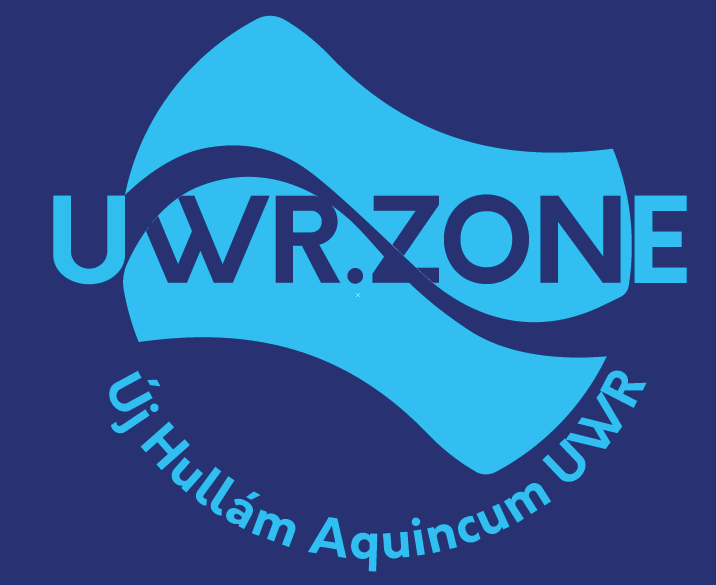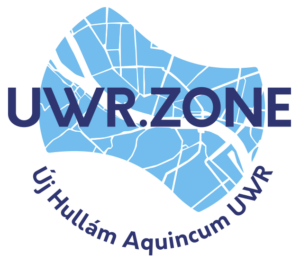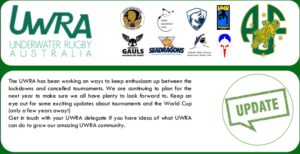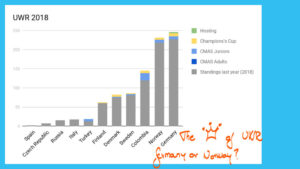Every story we tell speaks about us and our experiences. The birth of The Current is a Hungarian UWR POV, a biased story charged with emotions. It’s a long read and some parts may be painfully obvious to anyone coming from sports-management, but the players of this “weird sport”, underwater rugby, are surprisingly ordinary people just like you and me, with ordinary problems like stale milk instead of youth recruiting.
Did Hungarians just kill rugby in the the water?
Early water polo was much alike UWR. In Commonwealth countries, the goal was often a net underneath the surface. In the first half of the XX. century the national Hungarian polo team was introduced to this style of the game in the US multiple times, but the team of Komjádi Béla invented the dry (hand to hand) pass which changed the nature of the game in the 30s in favor of today’s water polo. The idea of rugby in the water was forgotten till the 60s when German army divers started to play with a weighted ball underwater. UWR barely survived it’s first 10 years, but it was the time it gained it’s later official rules. The version called UnterWasser Rugby was the passion of a German dentist, Dr. Grimmeisen, who was determined to create a sport out of which others saw as an entertaining way of training. The two prominent countries of the world’s first international diving federation, CMAS, France and the USSR showed no interest. Skandinavians however, adopted the game quickly, just like Austria, and with the Czech Republic, the sport also established a foothold in the Eastern block.
Golden Age
There are traces of UWR-related games at some of the oldest Hungarian diving clubs , like the Amphora. The story of the first official team goes back to Sándor Munkácsi diving instructor, who, just like the Germans, used the game as a training method. The game called smthing like “racket rally” (korongderbi) used to be played or still is played at Tüzér street, in a shallow pool, which makes the whole thing feel like a brutal mass fight.
This group was joined by UWH players like the Kis family in 2006, and they were playing their underwater game at BVSC when a man called László Cséplő found them. He had a long history of playing in the Czech republic, and encouraged the players in Budapest to adopt to the international rules.
His most important request was to move the trainings to a diving pool.
On the 18th of February 2007, these people stared down in shock into the 5 meter depth of the Hajós Alfréd Swimming Complex’s old diving pool, starting something very new in Hungary.
The first club was formed by Tamás Novotny in 2008. The Hungarian diving federation recognized UWR Tiszavirág and the sport in the same year. Hungarians engaged in the European competition scene. Players from the Vienna club coached the team to catch up to the international level, and the 3 times we made it to the Champions’s Cup in Berlin, the team showed exceptional strength for newcomers.This was the Golden Age of Hungarian UWR, with players like László Bódis, István Szeli or the Kis-twins.
My first impressions
It was 2009 I’ve first heard about UWR abroad, in Salzburg. Many of my friends played water polo, but I lacked ball skills just as much as proper swimming technique, all I had was a taste for new things. I’ve borrowed a freediving set and visited the trainings of Tiszavirág.
And it took me months to go again. The first 10 minutes I broke the thin blade of my plastic fins, and I even had trouble going down to the bottom of the pool, not to mention catching up to the ball. I don’t know what drove me back. It was the first team sport I’ve found exciting. Maybe I was pissed how awfull my skills were.
I played, week after week. The sport draged me in, my skills were improving, therefore I started to enjoy the trainings even more, underwater rugby became my passion. The Tiszavirág’s participation in the competetive scene was organized by the polo player András Klima aka. Moby, partly because of his polo ecperience and connections, partly because he was always the most motivated to go to tournaments.
It was an honor when he first asked if I’d join the team for a Czech competition, and the Kisfater did not start arguing not to take a newbie along. I was about to see those werebears they’ve joked about so often! We had a lot of issues arising from the need to introduce newbies to the international level of competition, while the trips cost us a lot, and going with a rookie and/or incomplete team results in defeat for sure.
Being constantly at the end of the line is pretty demotivational, and there was no doubt our club was eroding, yet we pushed on competing. We were afraid that if we stopped going to tournaments, we’d fell out of the international UWR network, and at the time social media was not so much obvious part of life. Also, the federation expected us to convert what support was given into competing and bringing results. Sometimes jump in players from abroad gave a push to our ranking but they were not real solutions to the problems. Despite all this I have many fond memories of this era. It felt better coming in last with a team forged under pressure than to rank higher with a one-time team setup. It occured that Ádám Szabó-Jilek, Csaba Juhász and the Kisapuka were planning tactics together as we stood up against whole teams with a fistful of players. The sweet shock on the Czech faces as we stood our ground. Hmm, stood our ground better than expected at least.
As I got more and more invested in UWR I’ve started to think about what I could do to improve the sport in Hungary.
Like others, I’ve invited my friends along to compensate for the loss of players. An athlete’s responsibility covers trainings and competitions, how one represents a country in a sport. But also, athletes represent their sport in their country. We had to take action developing UWR, otherwise not even those could play who were not motivated beyond self-recreation.
Conscious construction
The trends slowly changed by the obvious recognition that we shape the image of the sport otherwise it doesn’t even reach the surface! Till then we were reported on twice a year. Each summer, the 2 largest channel networks visited us to tell the story of how “a new madness is taking over” amongst “the champions of weird sports.” There was no other way to see us but framed between toe-wrestling and wife-carrying. Besides, most players were familymen, trainings were late in the evening, by when there wasn’t even the slightest chance of anyone running into us in the empty Swimming Complex. Most people had no idea UWR existed, or they’ve imagined it to be something wacky.
We had to do something. I’ve set up social media profiles for UWR and bought a few sportcams. They came handy in showing our progress and mistakes but even more in creating an audience for the sport.
We got great covers, but we owe the break-through here to István Gergely, dr. Gergely Kiss and the water polo team of Honvéd. Their participation in the first friendly match between the first class polo team and the first Hungarian team was covered by mainstream media with headings like “the most splendid invisible sport”.
This much activism started to surface what Hungarians call “two pipers can’t get on in one tavern” which is ours for “too many cooks spoil the broth”, just… more Hungarian.
Introducing anything new was a lot of work to convince the “presidency” of the club. For the polo match we needed tons of gear, and the decision was made that our budget can’t cover this, so from then on I’ve started buying fins, masks, snorkels which allowed us to train more recruits plus many on the team switched to Hungarian fins for their speed. The importance of broadcasting the Budapest Cups organized by Moby and Ádám was less and less disputed. We were able to raise the level here well. In 2012 the video system built by András Cetanas brought the picture of 2 cameras live to the surface. In 2015 the team accepted the proposal of a penalty tournament for the first time in UWR’s history and while it met opposition early on, had such success later that Tiszavirág decided to make it part of it’s tournament’s program again. At this tournament we handed out 12 pairs of Najade and Muréna fins as prizes to the champions with a worth of cca. 1000 EUR.
Many ideas never got a chance. The Czech League, which was kind enough to include a Budapest round, represented the top of the competition, being Czech national championships at the same time. When we dropped out, assembling the also less competitive Austrian, Italian and Greek summer tournaments into league with ours would have been an obvious step. It happened later under the name of TriNations League, but without us and the TriNations hold 7 nations by now, and became the largest league of the mediterranean Europe. Recruiting youth was more important anyway, because despite the increase in new players, more and more left the team because of the conflicts and lack of results. From some we have departed in manners I did not agree with. But we advertised, visited schools and conventions. The seeds of a new generation to carry the flame forward has been planted.
The dream of a European Championships in Budapest is born…
I’ve started taking up my weekends to organize UWR workshops. This was already a path along the crack. Youth recruit otherwise was only done by the president’s friend and colleague, József Janik, but he stopped assembling a youth team after a few attempts and shifted to finswimming.
Like many other countries’ federations, ours also lacks UWR in the leadership. The focus is on the otherwise very successful finswimming. Hungary manufactures the bi-fins homologated by CMAS and we rule these categories. 90% of state funds for diving sports are given to finswimming, the remaining 10% is shared by the other diving sports like the also successful underwater orienteering or UWH, and 10% of that 10% (1% of the whole) is what UWR can claim.
The federation argued why fund playing around in the pool, we should either organize a ranked tournament or start bringing results. Life answered this question when Hungary applied to organize the FINA World Championships in 2017. Apart from a new diving pool, which was geared with 4 goal mounting bolts, the budget of 50 000 000 0 EUR ( 150 000 000 000 HUF! ) allowed the largest show for water sports ever with all the personal of the FINA including fans, media, etc. And what’s most important for UWR, high quality underwater broadcast live to the huge LED screens for the audience. It was an incredible, one-in-a-lifetime type of chance.
At the end of 2015 all Hungarian UWR players but one voted for our application due to the role Budapest played in 2017. The application is otherwise not more than a mere form which needs to be stamped and posted to the CMAS by the national federation which approved our decision but warned our several times that they are not to invest in our initiative at all. We got response pretty soon. Hungary won the right to organize the UWR European Championships in 2017! Heart attack. We were given an opportunity which raised our spirits high.
…and dies.
My plan was to trade the broadcasting rights and adtime in return for the use of the water worlds’s infrastructure. UWR supersharp on large screens for everyone! This was for CMAS to decide otherwise but I’ve noticed how loosely CMAS were handling its privileges at earlier championships. Broadcasting would’ve required investing in the technical background, which only teams were willing to do, but they had limited possibilities bringing the game to the surface, so everyone found it easier to leave this question unattended. Luckily the German head of the UWR committee, Rüdiger Hüls saw the opportunity in the cooperation with the organizers of BP2017 and waited patiently for us to tell a date at last when he could visit the pools and meet with the representatives of our federation. At the time I was also wearing something like a “head of the UWR committee” cap but probably my position was a lightweight one because I didn’t know how or when I was appointed neither how or when I was replaced by my successor. Instead of a year and a half long preparation, we were in for a year and a half long stress period. While preparing for my own bar exam I was trying to manage the event get through between Scylla and Charybdis, as the meantime the FINA Worlds changed dates twice and they were top priority when it came to pool rentals and atop of that, the federation also announced an UWH EC. for the summer, but with Eger as location, one of the our cities which still lacks an UWH team, and changed the time of the UWH event twice as well.
Moby, who was motivated in bringing the EC. to Budapest just as much, gave up on the plan in December 2016 and left to play on the other side of the globe, missing the handshake with BP2017 with only two weeks. The solution was to use the brake between the “normal” WC. and the masters WC. for the UWR event, offering the broadcast rights and adtime in return.
The rest is that type of history for which there is never enough time in the schools before the graduation as we are busy writing it still. I’ve left the gear I’ve collected throughout the years to Tiszavirág for coins, so did I leave the sport too for two years. I assume much has happened in Hungarian UWR the meantime, last year I’ve read that we selected a national team which won third place at the European Championships at it’s first international tournament and which is now preparing for Graz. During such success I was managing a midlife crisis and turned my life around. There are so many things I could tell you about that, but what matters now is underwater rugby and The Current, the 2nd UWR club of Hungary, which’s site you are browsing now.



